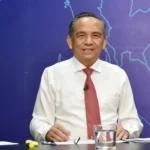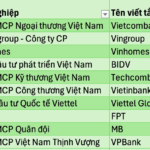
|
A historic day for Vietnam as it undergoes a significant administrative reorganization to enhance its development trajectory.
|
Today marks a pivotal moment in Vietnam’s history with the official announcement of resolutions and decisions regarding the merger of provinces and the appointment of key personnel at the provincial and communal levels. This event signifies a monumental political transformation in the country’s journey towards a more streamlined and prosperous future.
The General Secretary To Lam will grace the ceremony in Ho Chi Minh City, while the President Luong Cuong will attend the event in Hanoi. The Prime Minister Pham Minh Chinh will be present in Haiphong, and the National Assembly Chair Tran Thanh Man will join the celebration in Can Tho. Other senior leaders of the Party and the State will also participate in the announcement ceremonies across various localities.
The following resolutions and decisions will be proclaimed during the ceremonies: National Assembly’s resolution on the establishment of new provinces and cities; Politburo’s decision on the formation of provincial Party committees; Politburo’s decision on the appointment of Provincial Party Committees’ Executive Boards, secretaries, and deputy secretaries for the 2020-2025 term; Secretariat’s decision on the appointment of Provincial Inspection Committees and their chiefs and deputy chiefs.
Additionally, the National Assembly Standing Committee’s resolution on the appointment of chairs and vice chairs of the People’s Councils, heads of the People’s Councils’ committees, and heads and deputy heads of National Assembly deputies’ groups will be announced. The event will also witness the Prime Minister’s decision on the appointment of chairs and vice chairs of the People’s Committees at the provincial level and the Central Committee of the Vietnam Fatherland Front’s decision to establish provincial-level chapters of the Front.
Resolutions and decisions regarding the communal level include: National Assembly Standing Committee’s resolution on the establishment of new wards and communes; Provincial Party Committees’ decision to terminate the operation of former district- and commune-level Party committees; Provincial Party Committees’ decision on the establishment of Party committees at the ward and commune levels, and the appointment of their Executive Boards; Decision on the appointment of chairs and vice chairs of the People’s Councils and People’s Committees at the ward and commune levels. The Central Committee of the Vietnam Fatherland Front will also establish chapters at the ward and commune levels.
The above-mentioned decisions will be conferred during the ceremonies, and the newly formed provincial and communal Party committees will be introduced.
A turning point in modern history
Vietnam has never witnessed such a significant change in its administrative map in the last half-century. This transformation goes beyond geographical boundaries, marking a new phase of development with a more streamlined and efficient local government structure, comprising only two levels.
On April 12, 2025, the Party Central Committee issued Resolution No. 60-NQ/TW, agreeing on a plan to merge administrative units at the provincial level, eliminate the district level, and merge communes, forming a two-tier local government model. The Politburo and the Party Secretariat have made crucial conclusions regarding the reorganization of the apparatus and administrative units.
With the National Assembly’s approval on June 12, 2025, the number of provinces and centrally-run cities has been reduced from 63 to 34 – the lowest number since national reunification. This adjustment is the most extensive in modern history, reflecting a fundamental and strategic reform in the state apparatus.
The National Assembly Standing Committee has also passed 34 resolutions on the rearrangement of communal-level administrative units in 2025. As a result, the total number of communal-level units nationwide has decreased from 10,035 to 3,321, including 2,621 communes, 687 wards, and 13 special units.
This reorganization goes beyond mere geographical changes. It embodies a new mindset in national governance, characterized by a comprehensive and thorough revolution, as described by Minister of Home Affairs Pham Thi Thanh Tra. The merger of administrative units considers not only geographical and demographic factors but also historical, cultural, ethnic, religious, developmental, and social-psychological aspects.
Moreover, this reform is coupled with the establishment of a two-tier local government model, which aligns with international trends and is believed to enhance governance effectiveness.
Prime Minister Pham Minh Chinh has emphasized that this revolutionary step is part of a broader strategy, including the implementation of the “four pillars,” to boost economic growth to 8% this year and double digits in subsequent years, achieving the centenary goals. These solutions build upon the resolutions of the 13th National Party Congress.
The Prime Minister underscored that the most critical aspect of this organizational revolution is transforming the political system (including Party organs, government agencies, the Vietnam Fatherland Front, and socio-political organizations) from passively receiving and resolving issues to proactively serving and addressing the needs of the people and businesses.
Ready to implement the two-tier local government model
To ensure a smooth transition to the two-tier local government model from July 1, 2025, the National Assembly passed numerous crucial laws and resolutions during its 9th session. This legislative session was one of the most productive in recent years, with 34 laws and 14 resolutions enacted.
Notably, the National Assembly approved a resolution amending and supplementing several articles of the Constitution, along with various laws and resolutions, providing a legal basis for reforming and reorganizing the two-tier local government structure.
Meanwhile, the Government and the Prime Minister have provided decisive, timely, and thorough guidance. They have convened numerous important conferences and meetings to propagate and implement the Politburo and General Secretary To Lam’s directives on key tasks related to the two-tier local government model’s deployment.
The Prime Minister has also issued consecutive urgent dispatches to urge ministries, sectors, and localities to thoroughly prepare the necessary conditions for the new model’s seamless, nationwide implementation.
During the 9th session’s questioning and answering activities, Deputy Prime Minister Nguyen Hoa Binh affirmed that the Government had meticulously prepared the necessary conditions regarding institutions, decentralization, human resources, infrastructure, technology, and supporting mechanisms to ensure the new model’s smooth operation without disruptions.
Social consensus: the foundation for success
The success of this administrative reform is underpinned by strong social consensus and unity. From the central to local levels and across the political system and the people, there has been a sense of responsibility and proactive engagement.
Minister of Home Affairs Pham Thi Thanh Tra emphasized, “We are moving forward with urgency, but we are also certain. Each step is a transformation within a new development space.”
This consensus is evident not only in the high voting rates in the National Assembly and the results of public opinion polls on administrative unit rearrangement but also in the readiness of local authorities. Many officials have worked through the night to finalize preparations, as seen in the “lit-up offices” across various localities. The new premises, reorganized files, and replaced signage all signify the eagerness to embrace a more efficient administrative apparatus.
On the eve of this transformative moment, General Secretary To Lam published an article titled “The Power of Unity.” In it, he quoted Ho Chi Minh’s immortal words: “Unity, unity, great unity! Success, success, great success!”
According to the General Secretary, Uncle Ho’s saying remains timelessly relevant. The power of unity is not only a lesson learned from humanity’s millennia of existence but also the foundation of its greatest achievements. This is especially true in the context of Vietnam’s nearly century-long revolutionary history.
As the country embarks on the mission of reorganizing the political system, streamlining administrative units, and rearranging its “territory” for sustainable development, the spirit of unity must be strongly upheld.
With strategic vision and leadership, the Party is determined to uphold and promote great national unity, considering it the “lifeline” and “red thread” that ensures the thorough and consistent implementation of the Party and State’s policies, thus fulfilling the legitimate aspirations of the people.
– Nhat Quang
Bolstering Investor Confidence in the ‘Restructuring’ Decision
The ongoing administrative reforms post-provincial mergers are expected to unleash resources, clear bottlenecks for the private sector, and boost investor confidence. These strategic initiatives are designed to streamline processes, enhance efficiency, and create a conducive environment for businesses to thrive. With a focus on removing obstacles and optimizing systems, these reforms are a testament to our commitment to fostering a dynamic and investor-friendly ecosystem.
Empower Banks to Offer Cash Flow-Based Loans, Not Just Collateral-Dependent Lending
“On June 27th, the Government Portal organized a seminar titled “Enhancing the Role of Commercial Banks in Implementing Resolution 68”.
“Proposed Establishment of a State-Run Real Estate Trading Center”
The Ministry of Construction has been working in close collaboration with the Vietnam Real Estate Brokerage Association to research and develop supportive practice mechanisms. Notably, they have proposed the establishment of a state-managed Real Estate Trading Center, which stands out as a significant initiative.





















